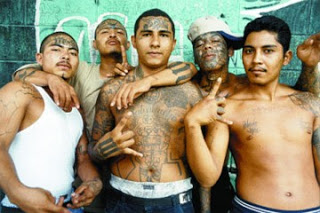Street Gangs & Modern Slavery
 “The gang members lured girls as young as 16-years-old by approaching them at high schools, metro stations, and on on the street, as well as contacting them through social media sites like Facebook.
The gang members would flatter the young women about their appearances, and ask them if they’d like to make a lot of money. Once they had drawn the girls in, the gangs used violence and drugs to force them into prostitution.
One teen girl reportedly was scared and tried to back out when she found out the job she’d been recruited for involved prostitution, but a gang member slammed her head against the window of a vehicle and then cut her across the left forearm with a knife before handing her off to be raped by multiple gang members.” (Gang Members Arrested for Suburban Teen Prostitution Ring, ABC News).
“The gang members lured girls as young as 16-years-old by approaching them at high schools, metro stations, and on on the street, as well as contacting them through social media sites like Facebook.
The gang members would flatter the young women about their appearances, and ask them if they’d like to make a lot of money. Once they had drawn the girls in, the gangs used violence and drugs to force them into prostitution.
One teen girl reportedly was scared and tried to back out when she found out the job she’d been recruited for involved prostitution, but a gang member slammed her head against the window of a vehicle and then cut her across the left forearm with a knife before handing her off to be raped by multiple gang members.” (Gang Members Arrested for Suburban Teen Prostitution Ring, ABC News).
Over the last fifteen years, criminal gang activity in the United States has become a serious problem. At the same time, human trafficking has emerged as one of the fastest growing crimes in the U.S. GC uncovered over two hundred cases in which gang members have been involved in human trafficking (recruiting, transporting, harboring, obtaining, or selling a person for purposes of commercial sexual exploitation or involuntary servitude).
Global Centurion analyzed the case law for patterns, including recruitment methods, methods of coercion and control, age of trafficking victims, and more. Using this newly collected data, GC examined anti-gang and anti-trafficking law and policy and drew up a set of recommendations for government officials, policy-makers, community leaders and educators. The work influenced members of Congress, as well as state and legislators, resulting in new laws addressing the link between street gangs and sex trafficking.
In addition, working with a local service provider, Courtneys House, GC created presentations for Washington area community centers, churches, and schools to educate citizens and students about the dangers of sex trafficking in street gangs.

